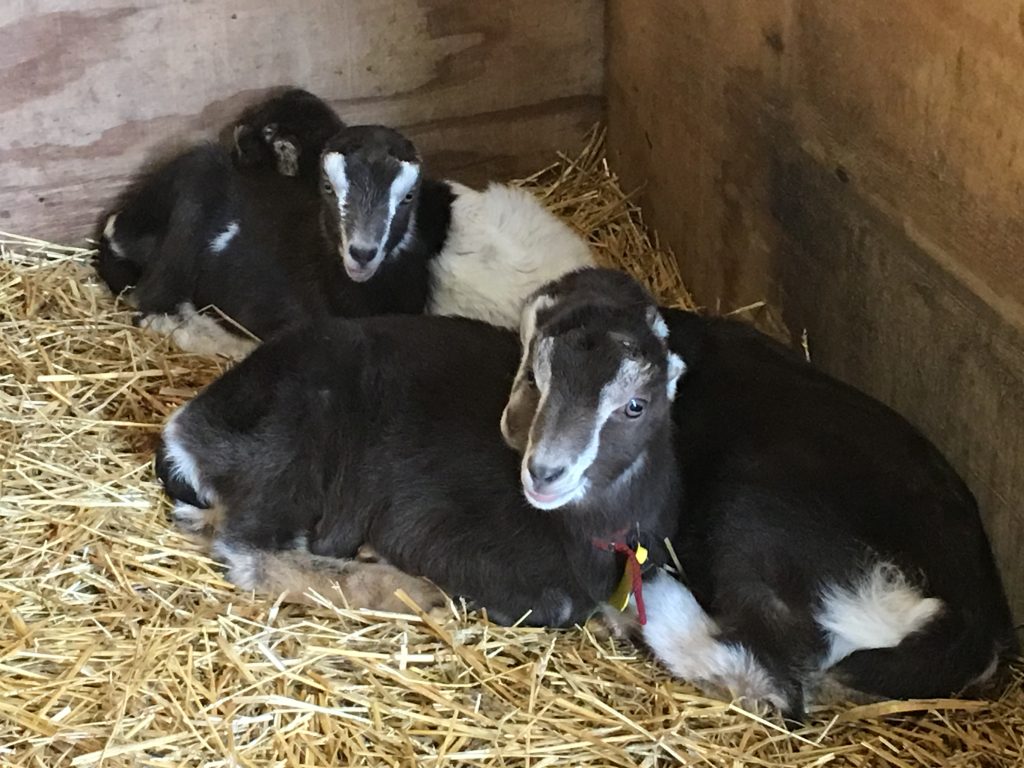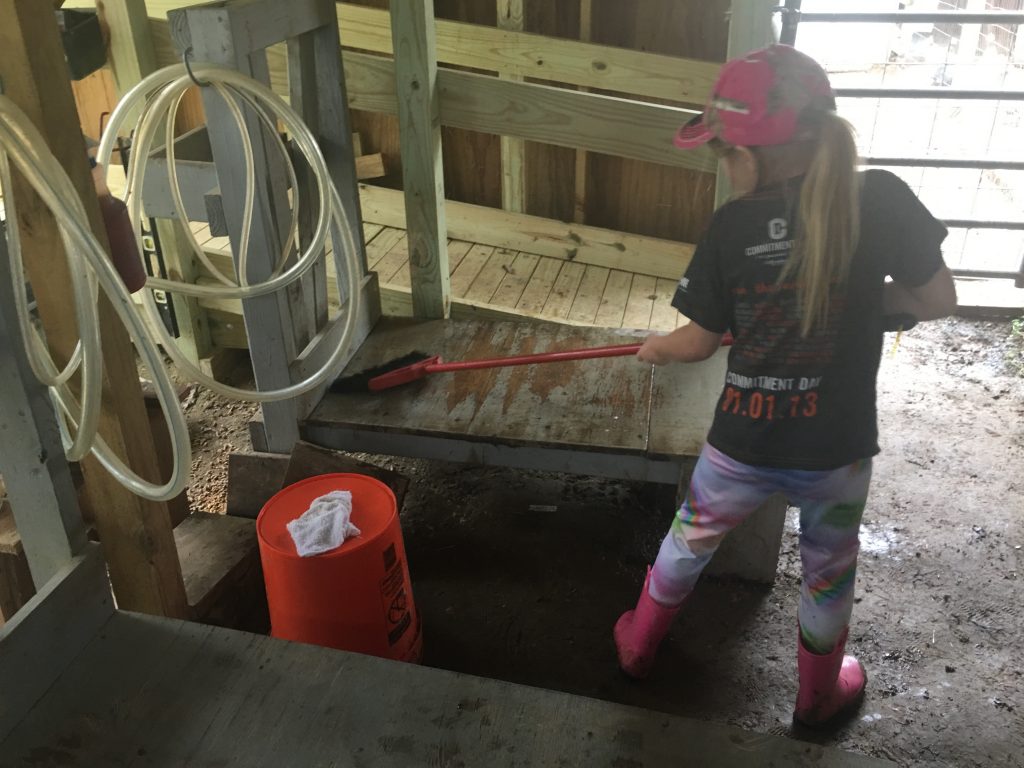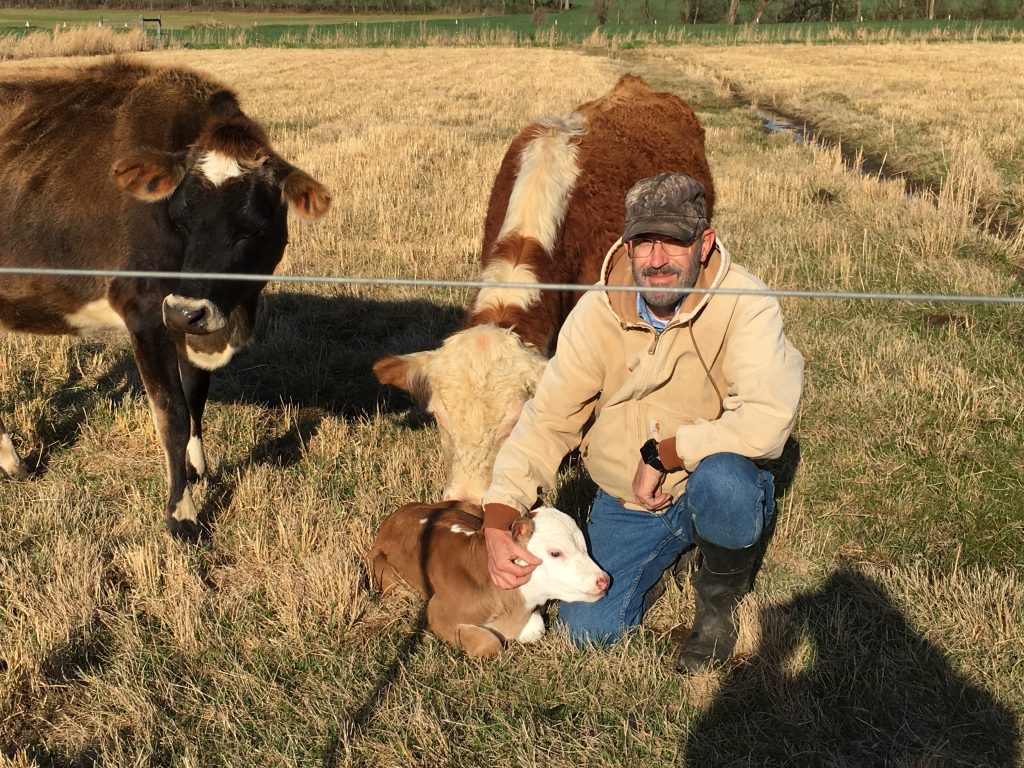Most people when first starting out in homesteading look at two basic animals for their dairy needs, goats or cows. Each has their own place on the homestead and can provide enough milk for your family if you manage them correctly.
NOTE: this should go without saying, but you would be surprised how many people I talk to who don’t understand that in order to get milk from an animal, that animal has to give birth ( i.e. no calf or goat kid, no milk).

At Possum Ridge Farms we raise both goats and cows. We have been raising goats for 25 plus years and cows for just the last few years, both are enjoyable, fairly easy to raise and mostly trouble free. Goats are a little more challenging in regards to fencing and housing but still are well worth the effort. Cows seem to be somewhat impervious to the weather, where goats run for the barn as soon as rain starts but both seek shade on the hotter days.
We have a centralized milking barn where we milk both cows and goats with a milking machine we have had for several years.

We found early on that hand milking takes much longer than milking with a machine. We tried milking with one of those hand vacuum milking pumps and although reasonably inexpensive, milking 20 or so goats twice a day was unworkable utilizing that design. With the machine we can milk 2 goats at a time. It takes about 5 minutes per pair of goats. The milking machine has been mostly trouble free and if kept clean it will last a lifetime. Our milking setup investment was pretty high, but has paid for itself many times over in milk collected, labor and time savings. If you are just starting out and only have a few animals maybe hand milking is for you, but if you have more than a handful of animals just the time required alone is a nonstarter.
The first thing I suggest you do is assess how much milk you really need. Remember to include all the milk by products in your estimate (butter, cream, cheese whatever) and remember that a goat only puts out a fraction of what a cow does. Also the butterfat compositions are different so it’s harder to make goat milk butter than cow milk butter after cream extraction. Speaking of cream extraction you will need a method of removing the butterfat from the milk, with cow’s milk you can leave it set and it will rise to the top, with goats milk you will need a cream separator to get maximum cream from the milk (see below).
A short demo of our hand crank cream separator
Bad things can happen (predators, sickness etc.) so plan ahead and if possible add additional livestock as necessary for a worst case situation.
You will find as you increase the total amount of food you grow on your land you never have enough time. Spending a couple of hours milking in the morning and the evening each day is problematic. But there are ways to manage this making life better for you and your dairy animals. We use a technique called calf sharing. If you consistently leave the calf in with the mother there will not be enough milk left when it’s time for your share to make it worth your efforts. You can partially wean a calf at 8 to 10 weeks depending on its growth rate sometimes sooner. We put the calf in another pasture during the day and milk the mother each evening, then return the calf to its mom immediately after milking. The calf can have the mother for breakfast and all night and we get the milk from the day each evening. You never seem to get the mother completely stripped of milk and the calf will get something in the evening as well. Some people prefer to put the calf up at night and milk the mother in the morning leaving the two together all day, both methods work. Actually you can wean much earlier but we don’t recommend it and we really don’t need 4 gallons of cow’s milk per day anyway. Even preserving it (freeze drying) that’s a lot of milk. We have never tried this with goats.

One last thing before starting your homestead dairy endeavor. I highly suggest if you haven’t already tasted milk directly from a cow or goat that you do so before spending money on facilities, animals and feed.
My granddaughter calls store bought milk, fake milk because the taste is somewhat watered down compared to milk straight from the cow or goat. The butterfat content is definitely different resulting in a taste difference from what you buy at the store. But if you want milk without hormones, chemicals and artificial additives a home dairy will be well worth your efforts
Until next time, see you down at the barn